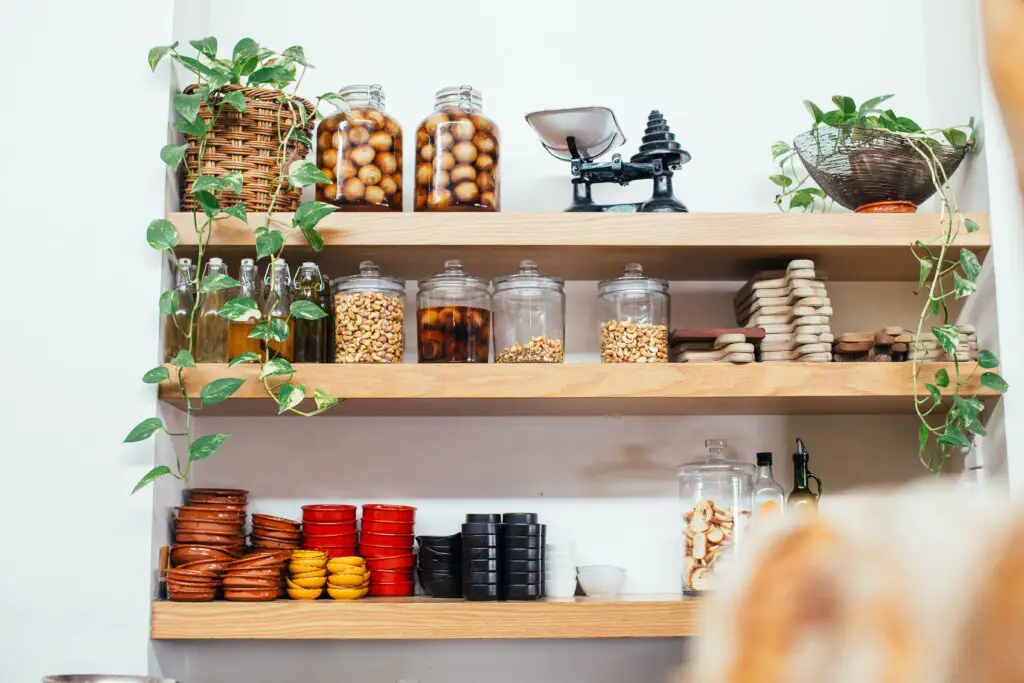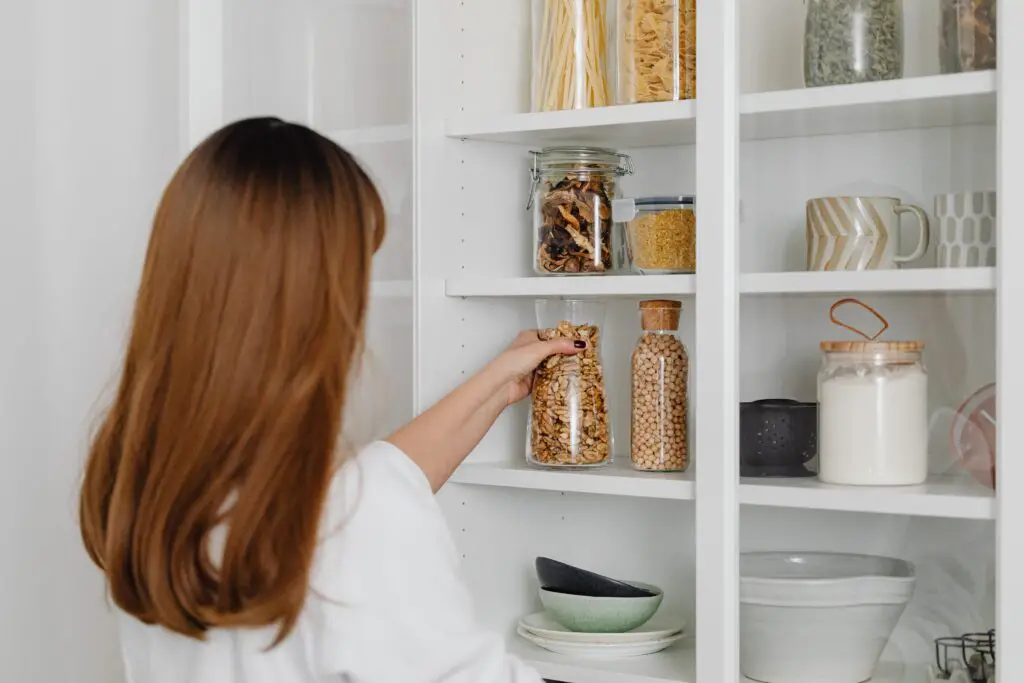A well-organized pantry is the heart of any kitchen. It not only streamlines meal preparation but also ensures you can quickly find ingredients and reduces food waste. However, achieving a professionally organized pantry requires thoughtful planning and practical solutions.
In this guide, we’ll take you step-by-step through the process of organizing your pantry like a pro. From assessing your current pantry setup to implementing clever storage solutions and maintenance tips, you’ll transform your pantry into an efficient and aesthetically pleasing space.
I. Assessing Your Pantry
Before diving into organizing your pantry, it’s essential to start with a clean slate. Empty the pantry completely, giving you a chance to declutter and evaluate your storage space. Remove expired items and consider donating non-perishables that you won’t use. Once your pantry is cleared out, give it a thorough cleaning to prepare for the organization process.
II. Planning Your Pantry Organization

Defining Categories and Zones
Begin by defining categories for your pantry items, such as dry goods, canned goods, snacks, baking supplies, condiments, and beverages. Arrange the items into zones based on their frequency of use. Keep frequently used items within easy reach and place rarely used items on higher or lower shelves.
Identifying Storage Needs
Take stock of your pantry’s current storage containers and determine what additional storage solutions you need. Airtight containers are perfect for dry goods, while stackable bins and baskets work wonders for snacks and treats. Consider investing in lazy Susans, shelf dividers, door-mounted organizers, and hanging racks to maximize space and accessibility.
III. Choosing the Right Storage Solutions

Investing in the right storage solutions is crucial for a pro-level pantry organization. Clear airtight containers allow you to see the contents easily and keep items fresh for longer. Stackable bins and baskets optimize shelf space, making it easier to access items in the back.
Lazy Susans and turntables are perfect for condiments and spices, as they provide 360-degree access. Utilize shelf dividers to keep different items separated and door-mounted organizers for additional storage options. Lastly, hanging racks on the inside of pantry doors create extra space for smaller items.
IV. Implementing the Organization Plan

Grouping and Sorting Items
Once you have your storage solutions ready, start grouping similar items together. Keep all your pasta in one area, cereals in another, and snacks in their own space. Sorting items by category will make it easier to find what you need and maintain the organization in the long run.
Labeling Containers and Shelves
Labeling is a crucial step in pantry organization. Use clear and readable labels for each container and shelf, ensuring everyone in the household knows where items belong. It also helps when restocking after grocery shopping.
Arranging Items Strategically
Arrange items in a way that aligns with your pantry zones and frequency of use. Frequently used items should be at eye level or within easy reach. Store bulk items and rarely used products on higher shelves or in the back.
Utilizing Vertical Space
Make the most of your pantry’s vertical space by using shelf extenders or adjustable shelving. This allows you to accommodate items of varying heights and prevents wasted space.
Storing Perishables Wisely
While the pantry is mainly for non-perishable items, certain perishables like potatoes and onions can be stored in baskets on lower shelves. However, it’s essential to avoid storing perishable foods that require refrigeration in the pantry.
V. Tips for Maintaining an Organized Pantry

Maintaining an organized pantry is an ongoing process. Here are some tips to help you keep your pantry in top shape:
Regular Cleaning and Decluttering
Set aside time every few months to declutter and clean your pantry. Dispose of expired items and reassess your storage needs as your cooking habits change.
Rotating and Restocking
When you buy new groceries, make sure to place the newer items behind the older ones to use them before they expire. Additionally, create a shopping list and stick to it to avoid overstocking.
Revisiting the Organization Periodically
Occasionally reassess your pantry organization to ensure it still meets your needs. Make adjustments as necessary to accommodate any changes in your cooking habits or household size.
Involving Family Members
Encourage everyone in the household to follow the organization system. Involve family members in the process, making it easier for everyone to find and return items to their designated spots.
Meal Planning
Plan your meals in advance to avoid buying unnecessary items and reduce food waste. Meal planning also helps you better understand what items you need to stock up on regularly.
VI. Troubleshooting Common Pantry Organization Issues

Dealing with Limited Space
If you have a small pantry, utilize alternative storage spaces, such as shelves in the garage or kitchen cabinets. You can also consider investing in space-saving storage solutions like over-the-door organizers or wall-mounted shelves.
Addressing Perishable Items
While some perishables can be stored in the pantry, it’s crucial to understand which ones require refrigeration. Perishables like fruits, vegetables, dairy products, and meats should be stored in the fridge.
Handling Oversized Items
For oversized or irregularly shaped items, consider using large baskets or containers on the floor of your pantry. These will help keep items contained and easily accessible.
Preventing Pest Infestations
To prevent pests, keep your pantry clean, and store items in airtight containers. Check for any signs of pests regularly and take immediate action if you find any.
Coping with Household Members
In case household members don’t follow the organization system, lead by example and gently remind them of the benefits of an organized pantry. Over time, the habit will likely catch on.
VII. Pantry Hacks and Creative Ideas

Creating a Snack Station for Kids
Dedicate a lower shelf or drawer as a snack station for kids. Place healthy snacks at eye level, making it easy for them to grab their favorites.
DIY Pantry Labels and Organization Tools
Get creative with DIY pantry labels using a chalkboard or dry-erase surfaces. This allows you to update labels easily and add a touch of personality to your pantry.
Incorporating Pantry Aesthetics
Add decorative touches to your pantry with attractive baskets, jars, and containers that complement your kitchen’s theme.
Conclusion
A well-organized pantry can streamline your cooking routine and reduce kitchen stress. By following this comprehensive guide, you’ll be able to create a pro-level pantry that is efficient, clutter-free, and visually appealing. With proper planning, thoughtful storage solutions, and regular maintenance, your pantry will become a space you’ll be proud to show off to friends and family.
Frequently Asked Questions (FAQs)
1. How do I start organizing my pantry?
Begin by emptying your pantry and decluttering its contents. Evaluate your storage space and plan the organization by defining categories and zones for your items.
2. What are the best storage solutions for a pantry?
Invest in clear airtight containers, stackable bins, lazy Susans, shelf dividers, door-mounted organizers, and hanging racks to optimize space and accessibility.
3. How do I maintain an organized pantry?
Regularly clean, declutter, and rotate items in your pantry. Involve family members in following the organization system and practice meal planning to reduce overstocking.
4. What should I do if my pantry is too small?
Maximize space by using alternative storage areas, like shelves in the garage or kitchen cabinets. Consider space-saving solutions like over-the-door organizers and wall-mounted shelves.
5. Can I store perishables in the pantry?
Certain perishables like potatoes and onions can be stored in baskets on lower shelves, but foods that require refrigeration should not be kept in the pantry.
6. How can I prevent pests in my pantry?
Keep your pantry clean, store items in airtight containers, and regularly check for signs of pests. Take immediate action if any pests are found.
7. How do I encourage family members to maintain the organization?
Lead by example and explain the benefits of an organized pantry. Involve them in the process, making it easier for everyone to find and return items to their designated spots.
8. Any creative ideas to enhance my pantry’s appearance?
Create a snack station for kids, make DIY pantry labels using a chalkboard or dry-erase surfaces, and add decorative touches like attractive baskets and containers.
9. What if I have oversized or irregularly shaped items?
Use large baskets or containers on the pantry floor to contain and easily access oversized items.
10. How often should I reassess my pantry organization?
Revisit your pantry organization every few months to make adjustments as necessary and accommodate changes in your cooking habits or household size.



